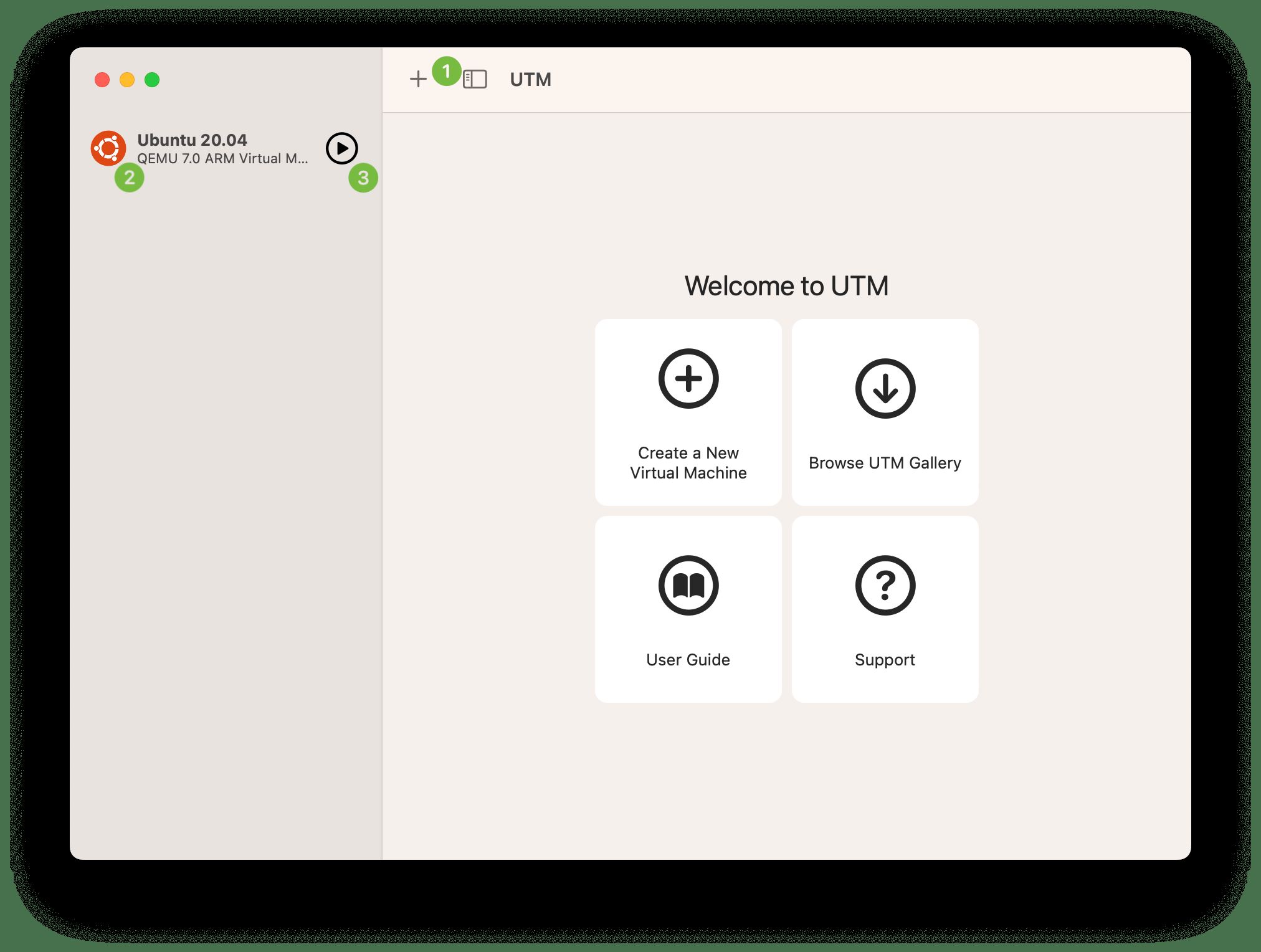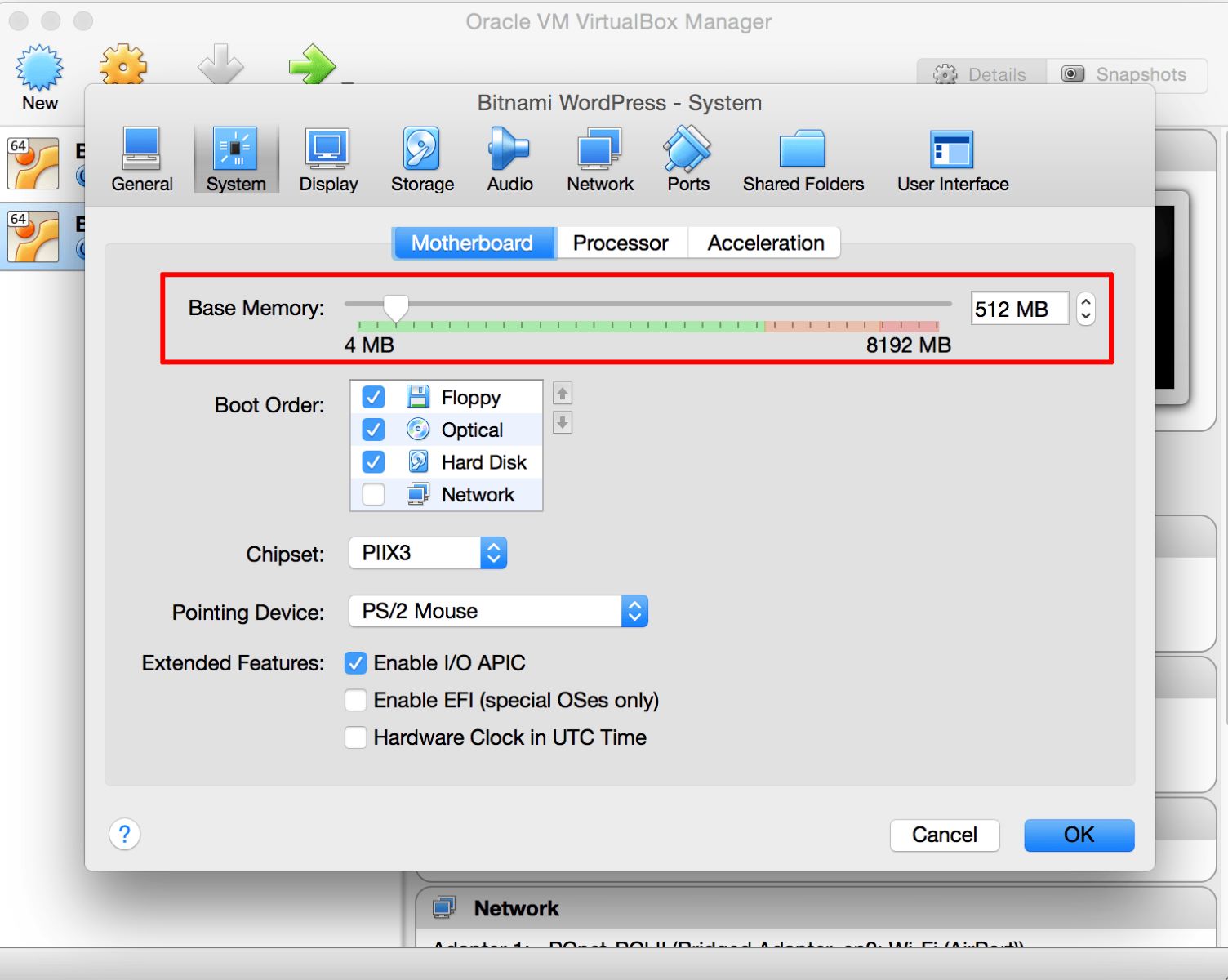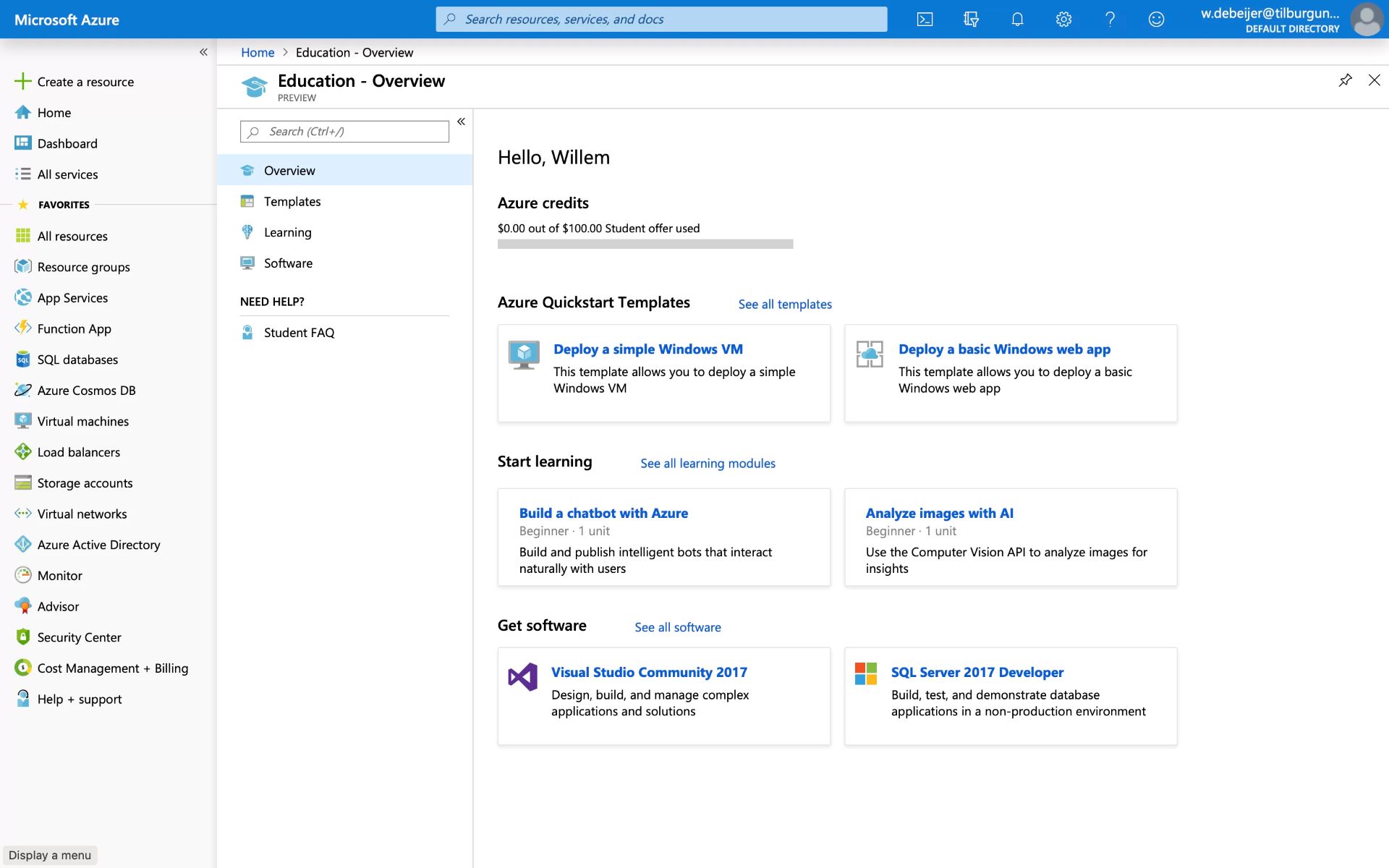Introduction
Virtual Machine Monitor (VMM), also known as a hypervisor, is a key technology in the field of virtualization. It acts as a software layer between the physical hardware and the virtual machines (VMs) running on it. The VMM allows multiple VMs to run simultaneously on a single physical machine, thereby maximizing resource utilization and enabling efficient management of computing resources.
Virtualization has revolutionized the IT industry, offering numerous benefits such as improved flexibility, scalability, and cost-efficiency. The advent of VMM has made it possible for organizations to consolidate their IT infrastructure and run multiple operating systems and applications on a single server, effectively reducing the hardware footprint.
Over the years, VMM has evolved to support various platforms and architectures, making it a vital component in cloud computing, data centers, and enterprise environments. The advancements in VMM technology have led to enhanced performance, improved security, and seamless integration with other virtualization solutions.
In this article, we will delve into the concept of VMM, its history, purpose, working principle, types, advantages, and challenges. Understanding the fundamentals of VMM is crucial for IT professionals, system administrators, and businesses aiming to optimize their infrastructure and take advantage of the benefits that virtualization offers.
Definition of Virtual Machine Monitor (VMM)
A Virtual Machine Monitor (VMM), also known as a hypervisor, is a software layer that enables the creation and management of virtual machines (VMs) on a physical host machine. It provides an abstraction of the underlying physical hardware, allowing multiple VMs to run concurrently on a single physical server.
The VMM acts as a mediator between the VMs and the hardware resources, providing each VM with its isolated and virtualized environment. It controls and allocates the physical resources, such as CPU, memory, storage, and network, to the VMs and ensures their efficient utilization.
The key objective of a VMM is to provide an illusion of running multiple independent machines with their own operating systems and applications on a shared physical infrastructure. It achieves this by abstracting the hardware resources and presenting them to each VM as if it has exclusive access to the underlying physical hardware.
VMMs can be categorized into two main types: Type 1 and Type 2 hypervisors. Type 1 hypervisor, also known as a bare-metal hypervisor, runs directly on the physical hardware without the need for an underlying operating system. This type of VMM offers superior performance and is commonly used in enterprise environments and data centers.
Type 2 hypervisor, on the other hand, runs on top of an existing operating system. It leverages the host operating system to access the underlying hardware resources. Although it may introduce some performance overhead, Type 2 hypervisors are more user-friendly and are often used in desktop virtualization scenarios.
The concept of virtualization and VMM has revolutionized the IT industry by enabling efficient resource utilization, dynamic workload management, and flexible infrastructure deployment. It has paved the way for cloud computing, where multiple virtual machines can be provisioned and managed on-demand, providing scalability and cost-efficiency to businesses.
Understanding the definition and functioning of VMM is crucial for IT professionals, system administrators, and businesses looking to harness the power of virtualization and optimize their IT infrastructure.
History of Virtual Machine Monitor
The concept of virtualization dates back to the 1960s when the first virtual machine technology was developed by IBM for its mainframe computers. However, it wasn’t until the early 2000s that virtualization gained significant traction with the advent of efficient Virtual Machine Monitors (VMMs).
In 2003, VMware introduced VMware ESX, a Type 1 hypervisor that allowed multiple virtual machines to run on a single physical server. This was a major breakthrough in virtualization technology, as it provided a robust and scalable solution for businesses to consolidate their IT infrastructure.
Shortly after VMware’s success, other major players such as Microsoft and Citrix entered the virtualization market with their own VMM solutions. This led to increased competition and innovation in the field, driving further advancements in VMM technology.
One of the major milestones in the history of VMM was the release of Xen in 2003. Xen was an open-source Type 1 hypervisor that gained popularity due to its performance and flexibility. It became the foundation for many cloud computing platforms and played a significant role in the growth of virtualization technology.
Another significant development was the emergence of Kernel-based Virtual Machine (KVM) in 2007. KVM, integrated into the Linux kernel, provided a full virtualization solution and became the de facto VMM for Linux-based systems. Its integration within the operating system kernel offered better performance and improved compatibility.
Over the years, VMM technology continued to evolve with advancements in virtualization hardware support, such as Intel VT-x and AMD-V, which provided hardware-assisted virtualization capabilities. These enhancements further improved the performance and security of VMMs.
In recent years, containerization technologies such as Docker and Kubernetes have gained popularity, offering a lightweight alternative to traditional virtualization. While not classified as VMMs in the traditional sense, containerization technologies provide a similar level of isolation and can be seen as an evolution of the virtualization concept.
Today, virtualization has become mainstream, powering data centers, cloud computing platforms, and enterprise infrastructures. VMMs have become an essential component for efficient resource management, workload flexibility, and scalability in the modern IT landscape.
Overall, the history of VMM is characterized by continuous innovation and competition among vendors, driving advancements in virtualization technology and revolutionizing the way businesses deploy and manage their IT infrastructure.
Purpose of Virtual Machine Monitor
The Virtual Machine Monitor (VMM) serves a crucial purpose in the field of virtualization by enabling the creation, management, and execution of virtual machines (VMs) on physical hardware. It fulfills several key objectives, providing numerous benefits for organizations and IT professionals.
1. Resource Utilization: One of the primary purposes of VMM is to maximize the utilization of physical resources. By running multiple VMs on a single physical server, organizations can effectively utilize their hardware infrastructure, reducing costs associated with underutilized servers.
2. Isolation: VMMs provide a high level of isolation between different VMs running on the same physical machine. Each VM operates independently, having its own allocated resources and isolated environment. This isolation ensures that any issues or vulnerabilities in one VM do not affect others, enhancing security and stability.
3. Hardware Abstraction: VMMs abstract the underlying physical hardware, presenting it to each VM as virtual hardware. This abstraction allows VMs to run different operating systems and applications, providing flexibility and compatibility. It also enables organizations to migrate VMs between different physical servers without the need for modifying the operating system or application configurations.
4. Consolidation: VMMs enable consolidation of IT infrastructure by running multiple VMs on a single server. This consolidation reduces the hardware footprint, simplifies management, and lowers power consumption and cooling requirements. It allows organizations to optimize their resources, resulting in cost savings and improved operational efficiency.
5. Flexibility and Scalability: VMMs provide the ability to dynamically allocate and reallocate resources to VMs based on workload demands. This flexibility allows organizations to scale their infrastructure up or down as needed, ensuring optimal performance and responsiveness. It also enables rapid provisioning and deployment of new VMs, facilitating agility in adapting to changing business requirements.
6. Testing and Development: VMMs offer a valuable environment for software testing and development purposes. Developers can create multiple VMs with different configurations, allowing them to test their applications on various operating systems or simulate complex network setups. This helps in identifying and fixing software issues before deployment in a production environment.
Overall, the purpose of VMM is to provide a robust virtualization platform that enhances resource utilization, isolation, flexibility, scalability, and cost-efficiency. It empowers organizations to optimize their infrastructure, streamline operations, and adapt to the ever-changing demands of the IT landscape.
How Virtual Machine Monitor Works
The Virtual Machine Monitor (VMM) functions as an intermediary layer between the physical hardware and the virtual machines (VMs) running on it. It operates by abstracting and managing the underlying hardware resources, providing each VM with an isolated and virtualized environment.
The VMM works by employing the following key components and mechanisms:
1. Hypervisor: The heart of the VMM is the hypervisor, which is responsible for creating, managing, and executing VMs. There are two types of hypervisors: Type 1 and Type 2. Type 1 hypervisors, also known as bare-metal hypervisors, run directly on the physical hardware, whereas Type 2 hypervisors run on top of an existing operating system.
2. Hardware Abstraction: The VMM abstracts the underlying physical hardware, representing it to each VM as virtual hardware. This abstraction allows VMs to access and utilize the hardware resources without being aware of the physical infrastructure. It provides a standardized interface for VMs, enabling them to run different operating systems and applications seamlessly.
3. Resource Allocation: The VMM manages the allocation and scheduling of physical resources such as CPU, memory, storage, and network bandwidth among the VMs. It ensures that each VM receives a fair share of resources based on predefined policies and priorities. This resource allocation allows multiple VMs to operate concurrently on a shared physical server, maximizing resource utilization.
4. Memory Management: The VMM handles memory allocation and management for each VM. It divides the physical memory into smaller chunks and assigns them to individual VMs based on their requirements. It also performs memory optimization techniques such as memory overcommitment and memory ballooning to efficiently utilize the available memory resources.
5. Device Virtualization: The VMM provides device virtualization to enable VMs to access and utilize I/O devices such as network interfaces, storage controllers, and graphics cards. It presents virtual device interfaces to the VMs, which are then translated and mapped to the corresponding physical devices by the VMM. This device virtualization ensures that VMs have seamless access to the required I/O capabilities.
6. Guest Operating Systems: The VMM supports the execution of multiple guest operating systems on the VMs. It provides mechanisms for managing the boot process, startup, shutdown, and communication between the VMM and guest operating systems. The VMM also offers various integration services, such as time synchronization and integration with host filesystems, to enhance the interaction between the VMM and guest operating systems.
In summary, the VMM works by abstracting the physical hardware, managing resource allocation, providing device virtualization, and facilitating the execution of multiple VMs with different operating systems. Its role is to ensure the efficient utilization of resources, isolation of VMs, and seamless integration between the virtual and physical environment.
Types of Virtual Machine Monitor
Virtual Machine Monitors (VMMs) can be categorized into two main types based on their architecture and integration with the underlying hardware and operating systems: Type 1 and Type 2 hypervisors.
1. Type 1 Hypervisor (Bare-Metal Hypervisor): Type 1 hypervisors, also known as bare-metal hypervisors, run directly on the physical hardware without the need for an underlying operating system. They have direct access to the hardware resources and provide a layer of abstraction between the hardware and the virtual machines (VMs). Some commonly used Type 1 hypervisors include VMware ESXi, Microsoft Hyper-V, and Citrix XenServer. Type 1 hypervisors offer superior performance and scalability, making them ideal for enterprise environments and data centers.
2. Type 2 Hypervisor (Hosted Hypervisor): Type 2 hypervisors operate on top of an underlying operating system. They rely on the host operating system to manage hardware resources and provide services to the VMs. Type 2 hypervisors are typically installed as applications within the host operating system. Examples of Type 2 hypervisors include VMware Workstation, Oracle VirtualBox, and Microsoft Virtual PC. Type 2 hypervisors are more user-friendly and commonly used for desktop virtualization, testing, and development purposes.
In addition to these primary types, hybrid hypervisors are also emerging, which combine the characteristics of both Type 1 and Type 2 hypervisors. These hybrid hypervisors incorporate the flexibility and ease of use of Type 2 hypervisors while providing the performance and isolation of Type 1 hypervisors.
Another classification of VMMs is based on the virtualization technique used. There are two main types:
1. Full Virtualization: In full virtualization, the VMM simulates the underlying hardware to provide complete isolation between the VMs and the host operating system. Each VM runs a complete operating system, unaware that it is running in a virtualized environment. The VMM intercepts and translates all hardware instructions issued by the VMs, enabling them to run unmodified operating systems. Full virtualization provides the highest level of isolation but may introduce some performance overhead.
2. Para-virtualization: In para-virtualization, the VMs are modified to be aware of the virtualization environment. The VMM provides an interface that the VMs use to communicate with the underlying hardware directly. This approach eliminates the need for instruction translation and improves performance compared to full virtualization. However, it requires modification to the guest operating systems.
Choosing the appropriate type of VMM depends on the specific requirements, performance needs, and intended use cases. Understanding the differences between Type 1 and Type 2 hypervisors, as well as the virtualization techniques they employ, is crucial in selecting the most suitable VMM for a given deployment scenario.
Advantages of Virtual Machine Monitor
The Virtual Machine Monitor (VMM) provides numerous advantages that make it an indispensable technology in the realm of virtualization. These advantages have led to its widespread adoption and usage in various industries and environments. Here are some key benefits of utilizing a VMM:
1. Resource Efficiency: VMM enables efficient utilization of hardware resources by allowing multiple virtual machines (VMs) to run on a single physical server. This consolidation reduces hardware costs, optimizes resource utilization, and decreases power consumption and cooling requirements.
2. Server Consolidation: By running multiple VMs on a single physical server, organizations can consolidate their IT infrastructure. This consolidation saves physical space and simplifies management, resulting in lower operational costs and improved resource management.
3. Agility and Scalability: VMM enables organizations to rapidly provision and deploy new VMs, allowing for quick scalability to meet changing demands. It provides the flexibility to easily adjust resources, such as CPU, memory, and storage, based on workload requirements, resulting in improved agility and responsiveness.
4. Isolation and Security: VMM provides strong isolation between VMs, ensuring that issues in one VM do not affect others. This isolation improves security by preventing unauthorized access and containing potential threats within the affected VM. Additionally, VMs can be easily rolled back to a previous state if compromised, enhancing security and resilience.
5. Compatibility and Portability: VMM abstracts the underlying hardware, allowing VMs to run different operating systems and applications on a common platform. This compatibility facilitates seamless migration and portability across different physical servers or cloud environments without requiring significant modifications or reconfigurations.
6. Testing and Development: VMM provides a valuable environment for testing and development purposes. Developers can create VMs with various operating systems and configurations, enabling them to test applications in different environments. This environment promotes faster development cycles, reduces risks, and improves the quality of software releases.
7. Disaster Recovery and Business Continuity: VMM allows organizations to create backup copies of VMs and store them off-site or in the cloud. In the event of a disaster or system failure, these backups can be easily restored, ensuring minimal downtime and facilitating business continuity.
8. Cost Efficiency: VMM reduces hardware, power, and cooling costs by optimizing resource utilization. It also streamlines management and maintenance, leading to lower operational expenses. Additionally, the ability to run multiple VMs on a single physical server reduces the need for purchasing and maintaining additional hardware.
In summary, the advantages of VMM include resource efficiency, server consolidation, agility, scalability, isolation and security, compatibility and portability, testing and development capabilities, disaster recovery, and cost efficiency. These benefits have made VMM an essential technology for businesses striving to optimize their IT infrastructure, improve operational efficiency, and adapt to evolving industry demands.
Disadvantages of Virtual Machine Monitor
While the Virtual Machine Monitor (VMM) offers numerous advantages, there are also some disadvantages that need to be considered. Understanding these drawbacks is important for organizations and IT professionals in order to make informed decisions regarding the deployment and utilization of VMMs.
1. Performance Overhead: Running VMs on a VMM introduces a certain level of performance overhead compared to running applications directly on physical hardware. This overhead is primarily caused by the additional layer of abstraction and the translation of hardware instructions by the VMM. Although advancements in virtualization technology have reduced this overhead, it is still a consideration, particularly for resource-intensive workloads.
2. Hardware Limitations: VMMs rely on the underlying physical hardware to provide resources to the VMs. This means that the performance and scalability of VMs are limited by the capabilities of the underlying hardware. If the hardware is not adequately provisioned or lacks certain features, it can impact the performance and capabilities of the VMs running on the VMM.
3. Dependency on VMM: VMs are dependent on the VMM for their operation, which means that any issues or failures in the VMM can affect the availability and functionality of the VMs. This dependency requires careful monitoring and management of the VMM to ensure its stability and reliability.
4. Network and I/O Limitations: Virtualizing network and I/O devices can introduce latency and performance limitations. The VMM must manage I/O requests from multiple VMs, which can result in lower network and storage performance compared to running applications directly on physical hardware. Additionally, the virtualization of certain devices may have compatibility limitations or require additional configuration steps.
5. Software Licensing Considerations: The deployment of VMs on a VMM can have implications for software licensing. Some software vendors may have specific licensing policies for virtualized environments, which could increase costs or require additional licensing arrangements. It is important to review and understand software licensing agreements to ensure compliance and avoid unexpected expenses.
6. Complexity and Management Overhead: Implementing and managing a VMM infrastructure can be complex and require specialized skills. The configuration, monitoring, and maintenance of VMs and the underlying VMM can be time-consuming and resource-intensive. Additionally, the management of virtual networks, storage, and security in a virtualized environment may require additional expertise and effort.
7. Single Point of Failure: In scenarios where a single physical server hosts multiple VMs, a failure or shutdown of the server can result in the loss of availability for all the VMs running on it. This highlights the need for proper backup and disaster recovery measures to mitigate the risk of a single point of failure.
While these disadvantages exist, advancements in virtualization technology have made significant strides in addressing these limitations. It is crucial to carefully evaluate the specific requirements, workloads, and considerations of the organization before implementing a VMM-based virtualization solution.
Challenges and Future of Virtual Machine Monitor
The Virtual Machine Monitor (VMM) has become an integral part of IT infrastructure, driving efficiency, flexibility, and scalability. However, there are several challenges and emerging trends that shape the future of VMM technology.
1. Performance Optimization: Overcoming the performance overhead associated with virtualization remains a significant challenge. VMM developers are continuously working on reducing this overhead through advancements in hardware virtualization support, improved resource management techniques, and optimizations in the VMM itself. Future improvements in processor architectures and virtualization-aware hardware are expected to further enhance performance.
2. Security and Isolation: Ensuring robust isolation between VMs and host systems is crucial to prevent potential security breaches. VMMs face ongoing challenges in addressing vulnerabilities and implementing strict security measures to protect against unauthorized access and potential attacks. Advancements in hardware-based security features, virtual Trusted Platform Modules (TPMs), and secure boot mechanisms are important areas of development.
3. Multi-Tenancy and Resource Allocation: As virtualization technology continues to be adopted in cloud computing environments, efficient management of resources and multi-tenancy becomes critical. VMMs need to provide effective mechanisms for resource partitioning, quality of service (QoS) guarantees, and dynamic workload management to ensure fair resource allocation and optimal performance for cloud service providers and customers.
4. Advanced Networking and Storage Support: VMMs need to keep pace with the evolving networking and storage technologies to provide seamless integration and performance in virtualized environments. The increasing demand for software-defined networking (SDN) and network function virtualization (NFV) requires VMMs to support these technologies, enabling enhanced network virtualization and management capabilities.
5. Hybrid Cloud and Multi-Cloud Environments: The adoption of hybrid cloud and multi-cloud architectures presents VMMs with challenges in managing workloads across different cloud providers and platforms. Interoperability, portability, and data transferability between different VMMs and cloud providers must be addressed to allow seamless migration and workload management in complex hybrid environments.
6. Containerization and VMM Integration: The rise of containerization technologies, such as Docker and Kubernetes, has introduced a new paradigm in software deployment. VMMs need to evolve to integrate with containerization platforms and provide enhanced compatibility and management capabilities for both VMs and containers. This integration allows organizations to leverage the benefits of both technologies effectively.
7. Green Computing and Energy Efficiency: With growing environmental concerns, VMMs need to play a role in optimizing energy consumption and supporting green computing initiatives. Power management techniques, efficient resource allocation algorithms, and better utilization of hardware resources can contribute to reducing energy consumption and carbon footprint in virtualized environments.
The future of VMM lies in addressing these challenges and embracing emerging trends. As virtualization continues to evolve, VMMs will evolve as well, enabling organizations to overcome these challenges and leverage the benefits of virtualization in a rapidly evolving IT landscape.
Conclusion
The Virtual Machine Monitor (VMM), also known as a hypervisor, has revolutionized the IT industry by enabling efficient resource utilization, isolation, flexibility, and scalability through virtualization technology. It acts as a crucial intermediary layer between the physical hardware and the virtual machines (VMs) running on it.
VMMs offer a wide range of benefits, including resource efficiency, server consolidation, agility, scalability, isolation, compatibility, testing and development capabilities, disaster recovery, and cost efficiency. These advantages have propelled the widespread adoption of VMMs in various industries and environments, from data centers and cloud computing platforms to desktop virtualization scenarios.
Despite its advantages, VMMs also come with certain challenges. These include performance overhead, hardware limitations, dependency on the VMM for operation, network and I/O limitations, software licensing considerations, complexity and management overhead, and the risk of a single point of failure. However, ongoing research and development efforts are addressing these challenges, resulting in improvements in performance, security, and management capabilities.
The future of VMM lies in addressing these challenges and embracing emerging trends. Performance optimization, security and isolation, efficient resource allocation in multi-tenant environments, advanced networking and storage support, hybrid cloud and multi-cloud support, integration with containerization technologies, and green computing initiatives are some areas that will shape the future of VMMs.
As the IT industry continues to evolve, VMMs will continue to play a pivotal role in enabling organizations to optimize their infrastructure, streamline operations, enhance security, and respond to changing business requirements. Understanding the concepts and benefits of VMMs is crucial for IT professionals and businesses that seek to harness the power of virtualization and leverage its advantages in a rapidly changing digital landscape.

























